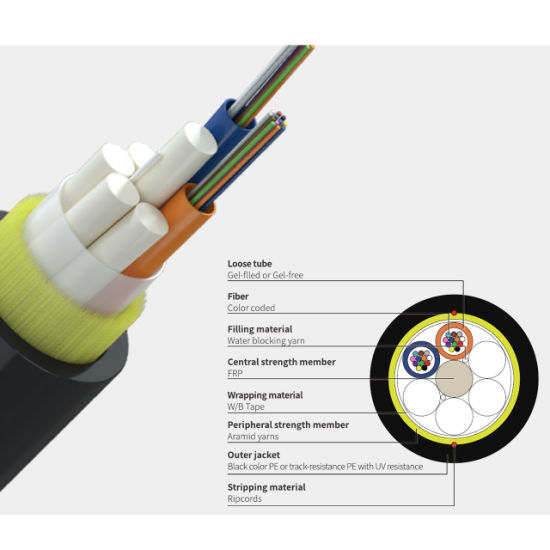Coutact Us
Whatsapp:+8618075108880
Email:info@ec-fibercable.com
Time:2023-05-30 16:26:22
Introduction:In today's fast-paced and data-driven world, the demand for high-speed and high-capacity connectivity is rapidly increasing. As a result, traditional copper-based communication systems are being replaced by fiber optic networks that offer superior performance and scalability. Within the realm of fiber optic solutions, high-density fiber cable solutions have emerged as a critical component in meeting the ever-growing need for efficient and space-saving network infrastructure. In this article, we will explore the concept of high-density fiber cable solutions, their benefits, and their applications in various industries.
What is High-Density Fiber Cable?
High-density fiber cable refers to a specialized type of fiber optic cable that is designed to accommodate a significantly higher number of fibers within a smaller form factor. Unlike traditional loose-tube or tight-buffered cables, high-density fiber cables feature a compact design that enables efficient use of space and provides excellent fiber management capabilities. These cables typically consist of multiple fibers bundled together and protected by a rugged outer jacket for durability and protection.
Benefits of High-Density Fiber Cable Solutions:
Increased Fiber Density: The primary advantage of high-density fiber cable solutions is their ability to accommodate a large number of fibers within a limited physical space. This high fiber density allows network operators to maximize the utilization of available infrastructure and optimize space allocation in data centers, telecommunications facilities, and other demanding environments.

Space Efficiency: High-density fiber cables are designed to minimize the space required for fiber management. With their compact design, these cables can be easily routed and managed within tight spaces, such as server racks and conduits, without compromising on performance or accessibility. This space efficiency is particularly crucial in data centers and telecommunications facilities where real estate is expensive and must be utilized effectively.
Scalability: High-density fiber cable solutions offer excellent scalability, allowing network operators to add or remove fibers as needed without major disruptions. This flexibility is essential in dynamic environments where network requirements frequently change, ensuring that the infrastructure can adapt and grow with evolving demands.
Improved Airflow and Cooling: High-density fiber cables contribute to better airflow management and cooling efficiency in data centers. By minimizing cable congestion and optimizing cable routing, these solutions enhance the overall ventilation and cooling effectiveness, helping to maintain optimal operating temperatures for critical equipment.
Enhanced Fiber Protection: High-density fiber cables incorporate robust protective measures, such as durable outer jackets, to safeguard the enclosed fibers from environmental factors like moisture, temperature variations, and physical stress. This ensures the long-term reliability and performance of the fiber optic network.
Applications of High-Density Fiber Cable Solutions:
Data Centers: High-density fiber cable solutions are widely used in data centers to support high-speed data transmission, server interconnections, and storage area networks. These cables enable efficient cable management within the confined spaces of data center racks, reducing clutter and ensuring easy access to individual fibers.
Telecommunications: Telecommunication networks, including central offices, base stations, and fiber-to-the-home (FTTH) installations, can benefit from high-density fiber cable solutions. The compact design and high fiber density enable efficient installation, maintenance, and scalability in telecommunications infrastructure, supporting the growing demand for high-bandwidth services.
Enterprise Networks: High-density fiber cables are employed in enterprise networks to provide reliable and high-performance connectivity for local area networks (LANs), wide area networks (WANs), and fiber backbones. These solutions facilitate efficient cable management in office buildings and campus environments, enabling seamless communication and data transfer.
Smart Cities: With the rise of smart city initiatives, high-density fiber cable solutions play a crucial role in establishing robust and scalable fiber optic networks. These networks support various applications such as intelligent transportation systems, video surveillance, public Wi-Fi, and environmental monitoring, enabling efficient data collection, analysis, and management.
Conclusion
A high-density fiber cable solution is a technology that enables the transmission of large amounts of data through a compact and efficient fiber optic cable system. This solution is designed to address the growing demand for increased bandwidth and connectivity in various industries, such as telecommunications, data centers, and enterprise networks.